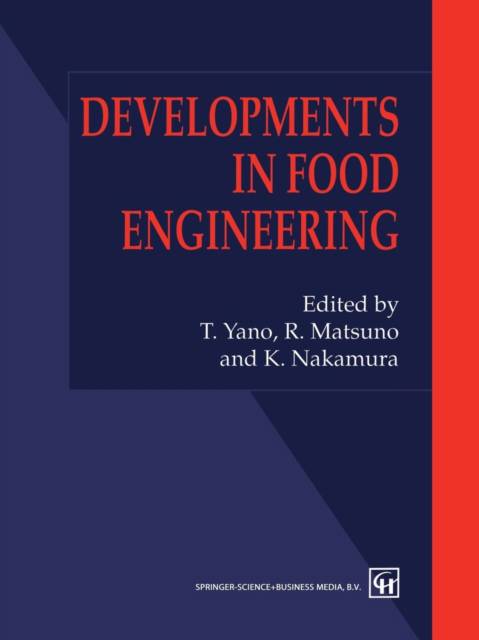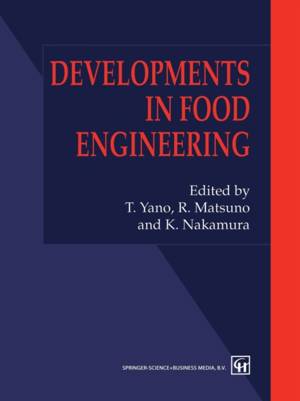
- Retrait gratuit dans votre magasin Club
- 7.000.000 titres dans notre catalogue
- Payer en toute sécurité
- Toujours un magasin près de chez vous
- Retrait gratuit dans votre magasin Club
- 7.000.0000 titres dans notre catalogue
- Payer en toute sécurité
- Toujours un magasin près de chez vous
Developments in Food Engineering
Proceedings of the 6th International Congress on Engineering and Food
Nakamura
Livre broché | Anglais
153,95 €
+ 307 points
Description
The necessity of prediction and fine control in the food manufacturing process is becoming more important than ever before, and food researchers and engineers must confront difficulties arising from the specificity of food materials and the sensitivity of human beings to taste. Fortunately, an overview of world research reveals that the mechanisms of the many complex phenomena found in the food manufacturing process have been gradually elucidated by skilful experiments using new analytical tools, methods and theoretical analyses. This book, the proceedings of the 6th International Congress on Engineering and Food (ICEF6), held for the first time in Asia - in Chiba, Japan May 23 -27, 1993 - summarizes the frontiers of world food engineering in 1993. Congress was joined by the 4th International Conference on Fouling and Cleaning. There were 476 active members from 31 countries participating in the Congress. The editors hope that readers will find this book to be a useful review of the current state of food engineering, and will consider future developments in this research field. The editors extend thanks to the members of the organizing committee of ICEF6, and the advisors, Dr. Ryozo Toei, Professor Emeritus of Kyoto University and Dr. Masao Fujimaki, Professor Emeritus of the University of Tokyo. They also acknowledge the international advisory board members who helped the organizing committee in many ways, and the 10 foundations and 66 companies that financially supported the ICEF6. Finally, the editors are indebted to the reviewers of the manuscripts of these proceedings.
Les avis
Nous publions uniquement les avis qui respectent les conditions requises. Consultez nos conditions pour les avis.







